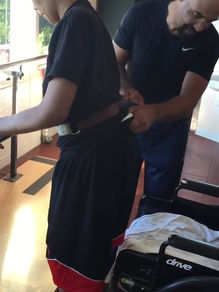

Treatment for Chronic Pain

The treatment of cervical Torticollis includes expert manual therapy, specialized stability exercises, mobility and functional retraining. In some cases colar management is indicated.
Treatment for Complex Medical Conditions

Treatment for Neurological Disorders
Strokes, Parkinson's, Guillan Barre
For those living day to day with the limitations Neurological Disorders such as stroke, Parkinson’s Disease, Multiple Sclerosis, Fibromyalgia, and many others the struggles to become functional and healthy and stay that way are constant. With experience in literally thousands of complex neurologic rehab cases I can make a difference in your condition.
In this collection of videos and images, we observe Travis working with patients as they navigate the challenges of various neurological conditions, Traumatic Brain Injury, and Stroke.
Surgical Recovery
There are processes and protocols for recovery following surgeries. All involve timelines and milestones for movement, healing, and remolding
To recover from common surgeries like knee, hip, and shoulder replacements, back surgeries, broken bones, tendon or ligament repairs, and hernias, as well as more involved procedures like heart or vascular surgeries, skin grafts, carpal tunnel syndrome, amputations, complex wound reconstruction, bone flap transfers, free muscle flap transfers, and many more indicated progressions of regaining function as well as contraindications must be known and followed for full recovery to occur.
To be sure you’re guided and progressed properly private therapy from a person like me with over 20 years’ experience specializing in rehabilitation is imperative for full recovery.
Neuromuscular Developmental Training
Functional activity requires ingrained and reflexive movement patterns to provide both stability and mobility to the body. In the cases of brain injuries, birth defects, nerve palsies or disease, normal or basic movement patterns and sequencing may be lost or never even acquired.
Neuromuscular Developmental Training or NDT seeks to provide patients with the opportunities to be moved and stabilized in a proper functional manner with the goal being to restore or create sound movement patterns.
The Therapist will guide the patient with techniques using familiar positioning and task breakdown so that the patients’ abilities are maximized for bringing forth skill and functional development. Using this type of approach is appropriate for some but not all patients and there is an art in knowing what techniques to use, as well as, the proper times to use the techniques. It is an art in which I have years of experience.
In addition to focal and selective strengthening, Teaching and reestablishing proper movements mechanics and sequencing(be they to fully restore function or to develop compensatory strategies )are the most artful a critical features of a physical therapist training. This is where the Magic can happen in recovery.
Knowing how to work through deficits to get answers to movement issues like the inability to sit, stand, walk, transfer, or become dexterous again may mean guiding a patient properly, fitting them with critical assistive devices, or setting them up with the proper daily regiment is the life changing difference.









































